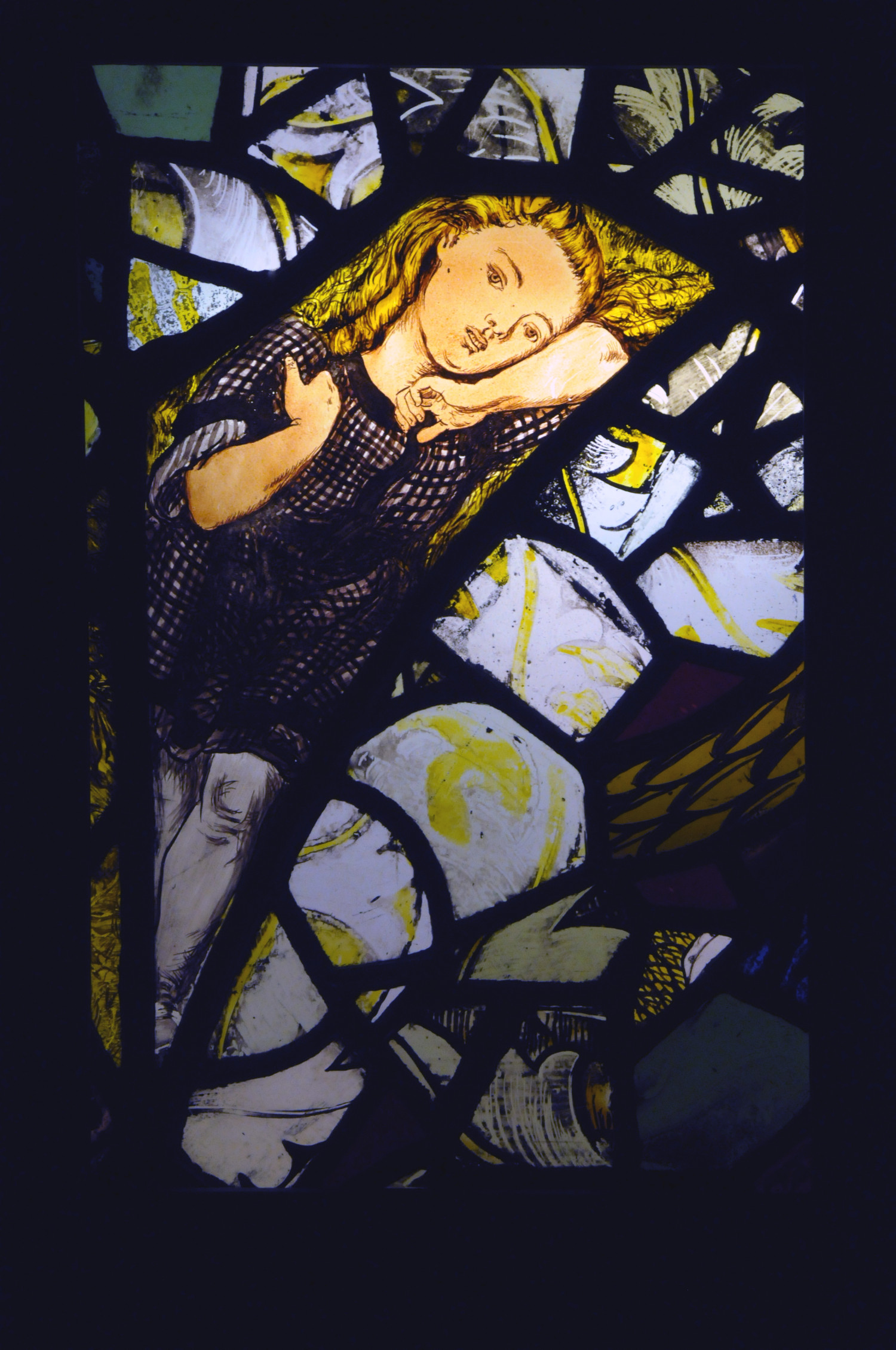This stained glass panel of three windows depicts a portrait of Ellen Morley Heaton, and the model of a house (Woodbank), she is flanked by panels depicting her two daughter. An inscribed scroll top left reads ‘JAH EH’ (of the Heatons)/Woodbank/’DGR AD 1861′ (Rosetti’s monogram and the date of production). Although designs and cartoons for stained glass were being prepared by Rosetti and other partners in Morris Marshall Faulkner & Co from the summer of 1861 onwards, it was not until November 1861 that a glazier was employed. It is therefore possible that the Woodbank panels were the firm’s first completed commission, although other windows, for Selsley and Brighton and Darley Dale were in progress at the same time. The quality of the glass-painting, especially in the panels of the Heaton daughters, might suggest that Rosetti himself was involved in transferring his designs onto glass.
John Aldam Heaton (1830 – 1897) was a wool and textile manufacturer in Bradford. In 1860 he moved to Woodbank, an ancient farm near Harden, Bingley, in Yorkshire. Heaton invited Rossetti to paint a portrait of Ellen, his wife, and the artist stayed with them at Woodbank for a month between November and December 1861 to carry out the commission. The portrait, known as Regina Cordium (Queen of Hearts), a portrait of Mrs Ellen Heaton, subsequently formed the basis of this stained glass window for the house. Through his friendship with Rosetti, Heaton made contact with the Morris firm and supplied it with a variety of fabrics. Heaton was also instrumental in securing a number of other stained glass commisions for the firm. When the Heatons left the Woodbank House in 1876, they took the glass with them. The panels were returned to the house in 1952 but then removed again and put in storage before being sold to the Gallery.

